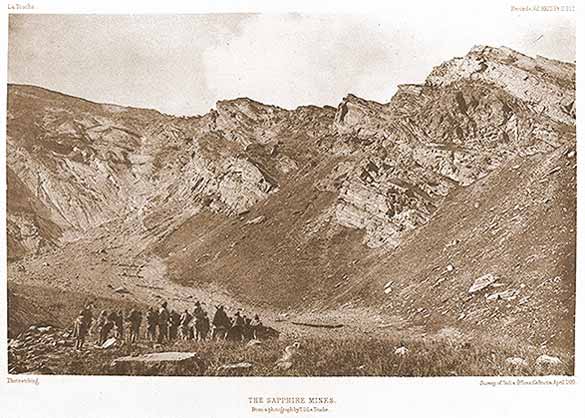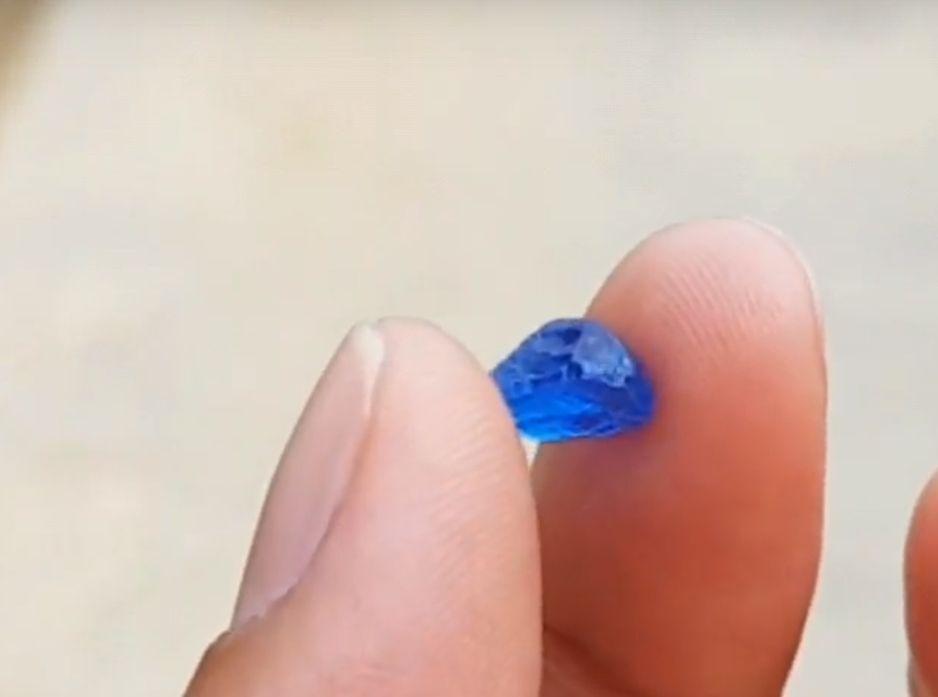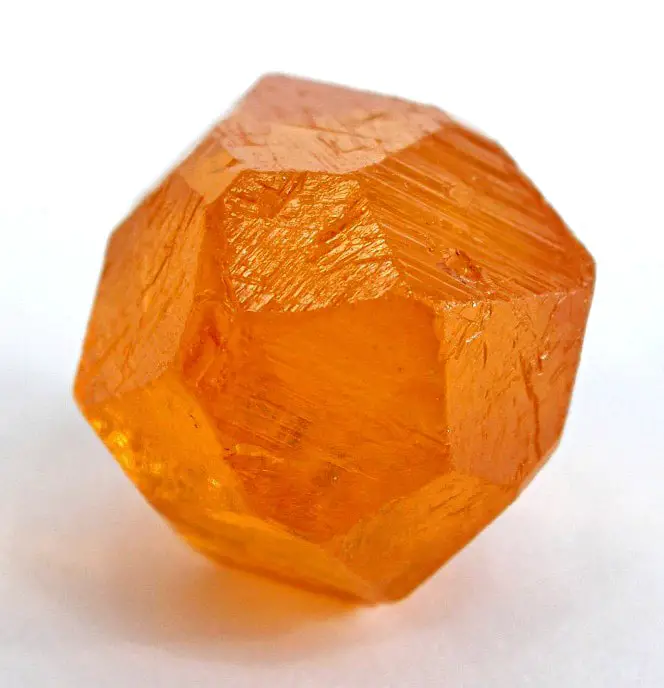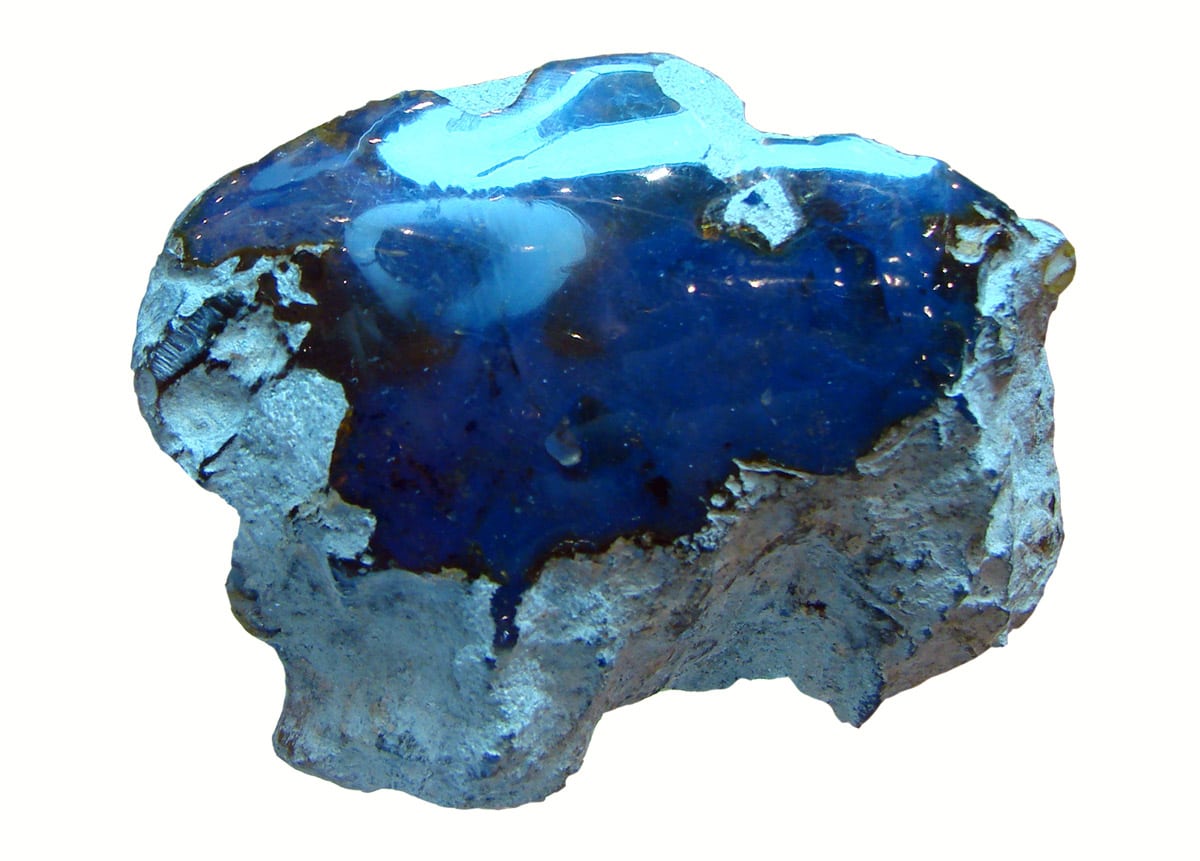World 🢖 Asia 🢖 India 🢖 Jammu and Kashmir
Gemstone finds 🢔 Rare natural materials 🢔 Geological wonders 🢔 Categories of wonders
Wonder
Kashmir sapphire mines

 In short
In short
The best blue sapphire in the world was found in remote mountains of Kashmir. Were… because now the legendary Kashmir sapphire mines are exhausted and the existing sapphires are very rare and extremely expensive.
 42.8%
42.8%
GPS coordinates
Location, address
Alternate names
Gemstones
Map of the site
If you see this after your page is loaded completely, leafletJS files are missing.
 In detail
In detail
History and legends
Around 1879 – 1882 it became known that in Kashmir have been found sapphires of exceptional quality. According to traders, these stones were found high in the mountains in a place of a recent landslide.
Legends of Kashmir sapphire mines
Some tell that a local hunter at first found a piece of sapphire which was very handy to strike a light for his pipe – better than pieces of quartz. After some time he sold this stone to a local gem trader.
Another story tells that a trader brought a bag with borax to sell in the market and a sapphire happened to fall out of the bag, on the street. A jeweler went by and picked it up and immediately saw into it a jewel of high value.
At first, locals and other gem hunters flocked to this site and many stones reached the market. Initially, the stones were sold at absurdly low prices. Gems were resold at higher and higher prices until they reached the markets in Calcutta and local tradespeople there bought the sapphires per equivalent of some USD 400 000.
When Maharaja of Kashmir learned about this, he went mad and required that all the transactions need to be undone. Thus all these deals had to be redone backward: traders in Calcutta returned the stones per USD 400 000 to their sellers and so forth until the stones reached the initial market where some packs of salt were returned to the initial trader. And sapphires came to the treasury of Maharaja.
The whereabouts of the mine were unknown to most. Gem hunters went to several places in the mountains and most of these places did not bring any yield. Occasional sapphires were found in several places but in most cases, further searches did not bring any result.
There was only one place where the wonderful stones were found.
History
In early 1882 F.R.Mallet published the news about this find and first examination of the stones in a scientific paper – he proved that this stone is a sapphire.
The fabulous stones were mined for several years simply by looking in the debris of the landslide and turning around the upper stones. The finds were exceptional – the sapphires of the first years have been the best so far. The largest stones of gem quality were 12.7 by 7.62 cm large. But soon the number of gems started to decrease and Kashmiri authorities decided that science could help at this.
In 1887 there was made geological research of the mine. The report by LaTouche T.H.D. is the best source of the information about the mine up to this day.
Around 1905 the official mining ended but private prospectors continued to look through the rocks in the hope to find larger pieces of sapphire.
In 1906 – 1911 there was mined the “New Mine” some hundred meters from the “Old” one – some successful finds were made but this mine was much less valuable. Nevertheless, mining on both mines continued up to 1979. Since then the mines have been abandoned.
Often the mining was burdened by gangs that appeared unexpectedly and took away all the stones. In the 1940ies there was built a police outpost to guard the order in the mines – it has burned down and disappeared since then. Now the police are guarding the entrance in the valley in Padder.
Most of the best blue sapphire was kept in the Kashmir State Treasury. Some Europeans have seen these immense riches in the 1930ies: the largest gem was larger than a croquet ball (diameter – 9 – 10 cm). Rich traders wanted to buy some of these stones but were refused. There is no information about the fate of these stones since the early 1980ies.
Today it is practically impossible to buy a top-quality Kashmir sapphire. The value of the remaining stones is unknown – but very high and increasing.
The inhospitable Kashmir sapphire mines
It has been noted that local people have been quite good at gem prospecting for many centuries if not millennia. The late discovery of Kasmir sapphires could be explained by climate change.
It seems glaciers covered the area not too long ago – maybe up to the middle of the 19th century. As the giant ice shields receded, the land opened. And – as the land opened, it was prone to the weather and gravitational forces. Landslides happened and one of such landslides opened up a very special geological formation.
Local geology
In this place, actinolite – tremolite rocks long, long ago were permeated by granite, and on the border of both formations formed pegmatites. Pegmatites often contain the most interesting minerals. Here some unique local conditions without known analogs in the world created the most beautiful sapphires. There are some more places in vicinities where sapphires can be found – but the exceptional velvety blue sapphires were found only in a small area.
Several more interesting minerals are found in this area – garnets, black tourmaline, enclase, kyanite. Occasionally less experienced miners are fooled by lazulite – a bright blue mineral that is too soft for cut gems.
Work in the mines
The “Old Mine” is located above the tree level, in alpine meadows, and for the most part of the year, it is covered with snow.
Mining in the “Old Mine” was possible only for a few months per year – from the middle of July to late September. But, if compared to most of the gem mines elsewhere in the world, here the miners did not go deep in the ground – nearly all the stones were found in debris that formed from the landslide.
The very best and largest sapphires were found in the beginning, as the find was discovered. Sometimes the crystals were abundant – in some chunks of pegmatite sapphires were like “plums in a pudding”.
Some years later the finds became more and more scarce. Thus, during the season of 1888, there were found some 5 kg of gem-quality sapphires. Most of these sapphires were quite small. Soon after the miners started to look for gems elsewhere.
The best blue sapphire in the world
Some of the world’s best sapphires are found in another country – Sri Lanka, but, nevertheless, the sapphires of Kashmir “Old Mine” are unsurpassed: this is the best blue sapphire in the world. The sapphires which were found here in 1881 – 1887 are the best ones.
Just like many of the world’s best sapphires, Kashmiri sapphires have intense coloration in the outer part of the crystal while the middle part is less intense or even colorless. The color is intensified by heating and in these noble stones after the heat treatment, the color is stable. Often the wonderful blue gems are just a cut-out from the outer rim of larger crystals.
A characteristic feature of Kashmir sapphire is its velvety texture – the stone contains numerous small inclusions which cause slight haziness. At the same time, these crystals are lucid.
References
- LaTouche T. H. D. The Sapphire Mines of Kashmir. Rec. Geol. Surv. India. 23, 59-69. Page accessed on 6th May 2019.
- History Padder Valley. Page accessed on 6th May 2019.
- Richard V. Gaines, The Sapphire Mines of Kashmir, doi.org/10.1080/00357529.1951.11768232. Page accessed on 6th May 2019.
- Richard Hughes, India, excerpt from a book Ruby & Sapphire. Page accessed on 6th May 2019.
Kashmir sapphire mines are included in the following article:
 Linked articles
Linked articles

Wonders of India
India is the seventh-largest country in the world by area, and, naturally, such a large area contains a huge amount of exciting attractions…
Wondermondo considers that India is the second richest center of architectural heritage in the world after Europe and maybe no single country in the world can match it in this respect.

10 finds of unique blue gemstones
A list of ten finds of unique blue gemstones around the world. Some of these gemstones are found only in one place: such as tanzanite or benitoite.

Gemstone finds
Gemstone finds are locations where are found rare and beautiful stones which that can be used for jewelry and have high market value.
Many finds of gemstones, such as jadeite mines in Guatemala or Sar i Sang lapis lazuli mines in Afghanistan – have been used for millennia and are legendary places.
 Recommended books
Recommended books
Searching for Sapphires (Gemstones of the World)
The mesmerizing blue of a sapphire stirs the senses and stimulates the imagination. Readers are invited to take a closer look at the radiant sapphire, scrutinizing its origins, properties, varieties, and uses. Putting an imaginative spin on curricular science topics, the educational text discusses the processes and environmental implications of sapphire mining. Vibrant photographs complement the book’s accessible, informative content.



Hello Sir,
I’m writing to inquire about a recent posting on your website concerning the Kashmir blue sapphire. I found the essay to be both instructive and captivating as a gemstone enthusiast who admires the beauty and cultural significance of this gemstone.
I’d like to express my interest in receiving future articles or books about the Kashmir blue sapphire that may be published on your website. Could you please set up keyword alerts for me so that I am notified via email whenever a new publication on the Kashmir blue sapphire is published on your portal? I would be grateful if you could provide me with any insight and information.
Thanking You